The initial choice of moves by white in chess can significantly influence the outcome of the match. To secure a commanding position and maintain the upper hand, it’s crucial to be well-versed in various opening strategies.
Whether you’re a beginner or a seasoned player, mastering these openings can equip you with the edge needed to outplay your opponents.
Below is a video link to enhance your gameplay:
Top 10 Chess Openings for White

The ten finest opening moves for white can differ based on your playing style and the level of your opposition, but here are a few that are widely recognized and robust, often employed at various skill levels:
The Vienna Opening
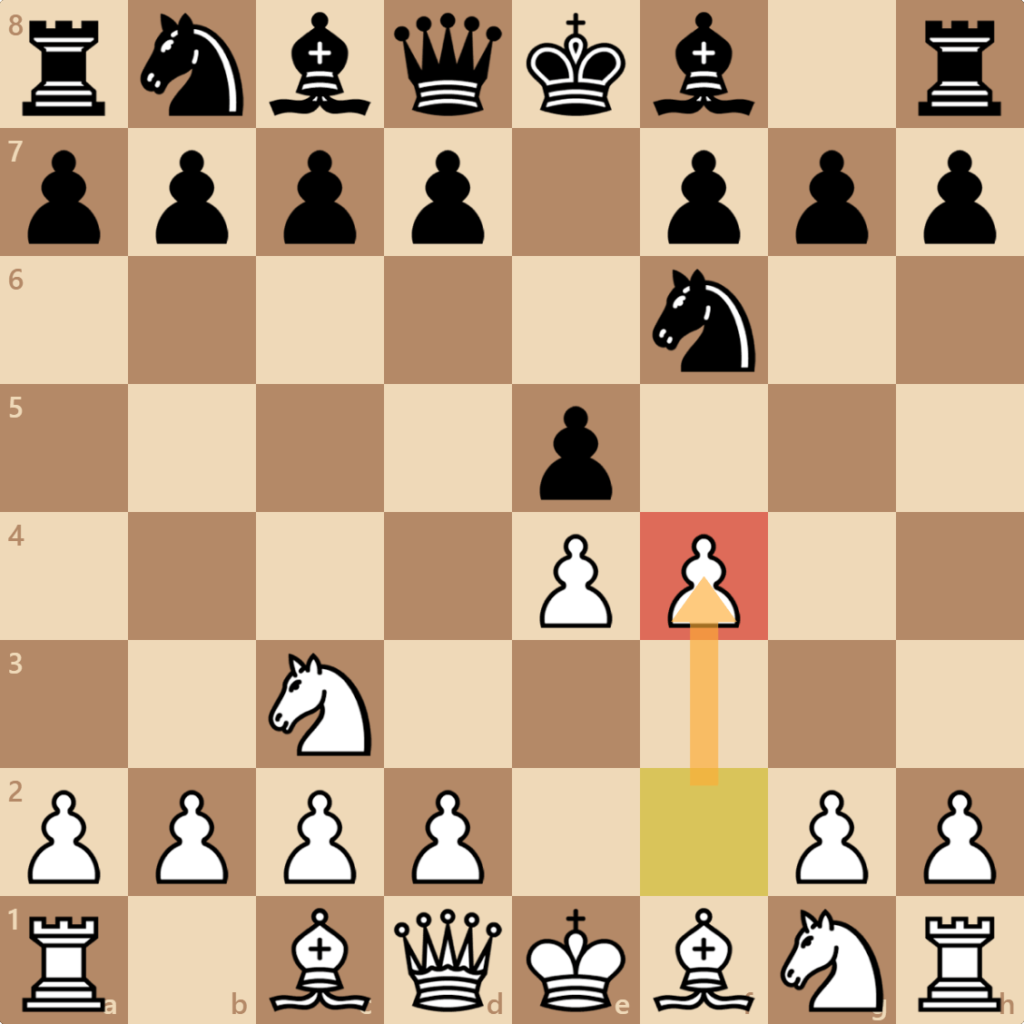
This opening moves with 1.e4 followed by 2.Nc3, aiming to take command of the board’s center and setting the stage for a rapid offensive.
The Vienna Opening leads to open and tactical positions. It’s not an assured win for white since chess is a complex game and the outcome hinges on the skill of the players and the moves made during the game.
The Vienna Game can indeed lead to intense tactical clashes, making it an excellent choice for those who prefer a vigorous and dynamic match. However, there’s no guaranteed triumph for whites; the result is dictated by the players’ decisions and strategies during the game.
Queen’s Gambit

The Queen’s Gambit is a renowned and respected chess opening that begins with the moves:
- d4 d5;
- c4.
In the Queen’s Gambit, white offers a pawn (the c4 pawn) to black in exchange for central control and the opportunity for swift piece development. After 2…dxc4, black may accept the gambit and capture the pawn with their queen, leading to a line known as the Accepted Queen’s Gambit. Alternatively, black may decline the gambit with moves like 2…e6, leading to the Declined Queen’s Gambit, or 2…c6, which transitions into the Semi-Slav Defense.
The Queen’s Gambit has been a cornerstone of chess strategy for centuries, known for its solid and classic approach, allowing both competitors to develop their pieces cohesively while maintaining control of the central pawn. This opening is named after the classic chess sacrifice – “gambit,” where a player offers a material concession, typically a pawn, to seize a stronger position or tactical lead.
In recent years, the Queen’s Gambit gained fresh popularity thanks to a novel and subsequent television series named after it, which tells the tale of the fictional chess prodigy Beth Harmon, reigniting interest in this time-honored opening.
Bird’s Opening

Named after the English chess master Henry Bird, Bird’s Opening is a somewhat unconventional and relatively uncommon first move. The Bird’s Opening kickstarts with the move:
- f4.
By this maneuver, white immediately begins to command the e5 square and prepares for the advancement of pieces on the king’s flank. The Bird’s Opening can morph into various other openings based on the opponent’s responses.
One potential follow-up is the From’s Gambit:
- f4 e5.
The move 1…e5 represents a gambit that blacks may choose to accept or decline. Accepting the gambit with 2.fxe5 can lead to a sharp and tactical game. If black declines, opting for a more solid position with moves like 2…d6, or 2…Nc6, the game might evolve into different openings or take on a distinct character.
Bird’s Opening is known for leading to a broad spectrum of positions, noted for its flexibility and asymmetry. While it’s not as widely played as the traditional 1.e4 or 1.d4, it can be an intriguing choice for players looking to diverge from well-trodden paths and provoke unbalanced positions.
It’s noteworthy that Bird’s Opening is not considered a main or classical opening, and its relative rarity in high-level play means opponents may not be as prepared for it as they are for more common openings.
Ruy Lopez

Also known as the Spanish Opening, the Ruy López is one of the oldest and most classical chess openings. It unfolds with the moves:
- e4 e5;
- Nf3 Nc6;
- Bb5.
In this opening, the white positions their bishop to b5, pressuring the knight on c6 and indirectly the black king on e8. Named after the Spanish priest Ruy López de Segura, who authored one of the earliest known chess books in the late 16th century, this opening has been a part of chess theory for several centuries.
Ruy Lopez’s move sequence is renowned for its solidity and strategic nature. It enables white pieces to dominate the center, harmoniously deploy their pieces, and exert pressure on the e5 pawn while preparing for kingside castling. Black players have various responses available, with 3…a6, known as the Morphy Defense, being a common choice to anticipate a possible exchange at Bxc6+.
Games opening with Ruy Lopez can lead to a wide array of positions and are rich in both tactical and positional play. It stands as one of the sturdiest and most favored openings in chess, with a deeply researched and detailed theory. Many iconic chess games, including those played by world champions, have featured Ruy Lopez, making it a foundational opening for players at every level.
The Smith-Morra Gambit
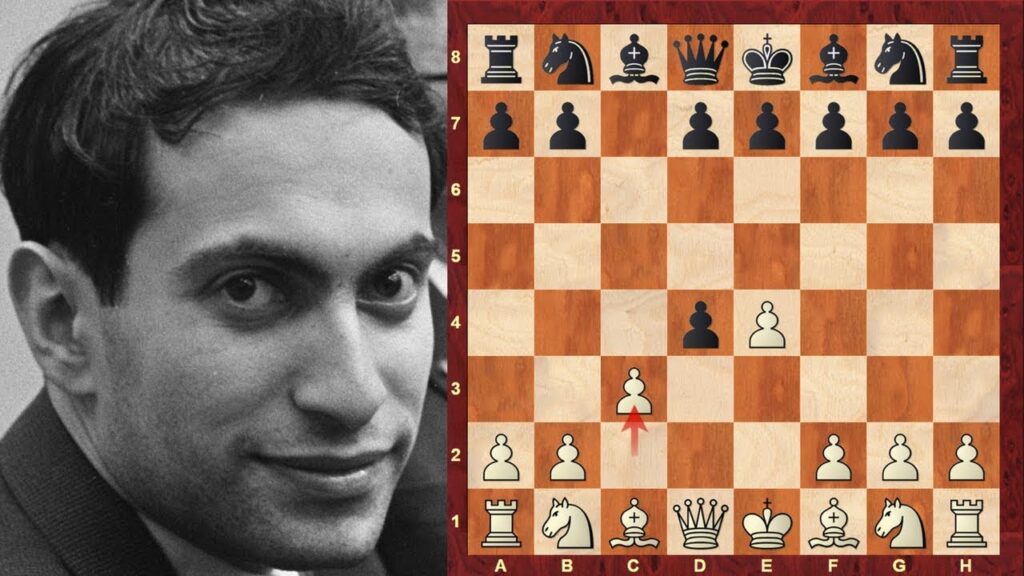
The Smith-Morra Gambit arises from the Sicilian Defense and is named after its architects, Pierre Morra and Ken Smith. This sharp and assertive opening variation for white offers a pawn sacrifice to spark an active play among pieces and open lines.
The gambit typically unfolds with the moves:
- e4 c5;
- d4 cxd4;
- c3.
At this point, white is ready to give up the c3 pawn, and black may either accept the gambit, capturing the pawn with 3…dxc3, or decline, opting for a different play. If black accepts, white aims to swiftly deploy their pieces and mount an assault on black’s king, utilizing the open “c” file.
The Smith-Morra Gambit can lead to tactical and dynamic positions where both players need to be well-prepared and vigilant. This opening is not very common at elite chess levels due to the pawn sacrifice involved, but it can be an unexpected and effective strategy in club-level play, as well as in rapid and blitz formats. Players who enjoy an active pieces’ play and sharp tactics might find the Smith-Morra Gambit an engaging choice.
The Scotch Game
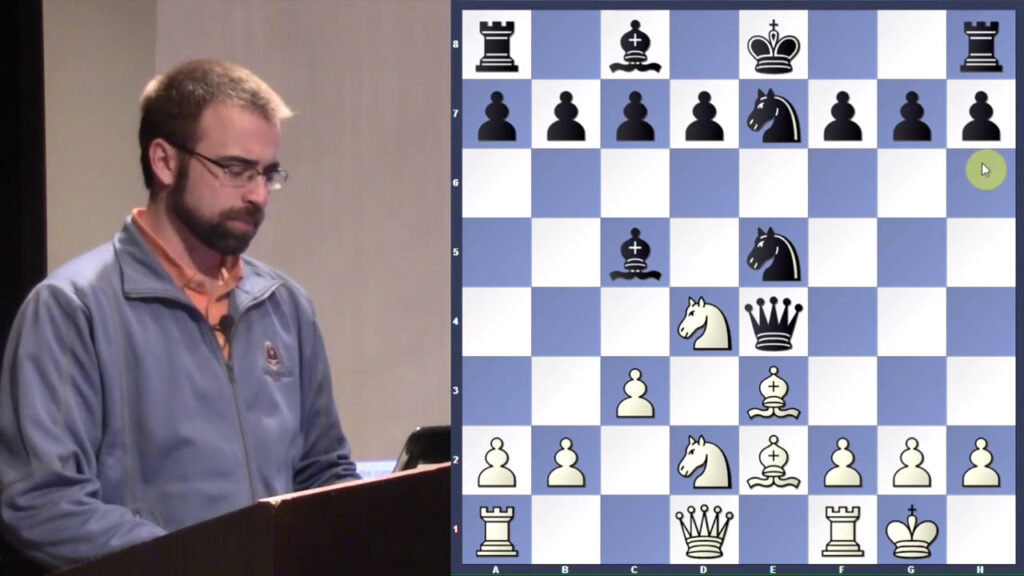
The Scotch Game is a chess opening that emerges after the moves:
- e4 e5;
- Nf3 Nc6;
- d4.
In the Scotch Game, white challenges the e5 pawn directly with 3. d4, creating an open and tactical stance. This opening was named after a correspondence match between Edinburgh and London in the early 19th century, where it gained prominence.
The Scottish Game leads to dynamic tactical skirmishes and frequently results in an unbalanced pawn formation. Following 3…exd4, white has multiple routes to progress, such as by playing 4. Bc4 (Scottish Gambit) or 4. Nxd4. If black proceeds with 3…Nxd4, it could also open up pathways to the Scottish Gambit.
The Scottish Gambit offers an alternative to more common variations such as the Ruy Lopez and the Italian Game, granting the chance for aggressive and transparent positions. Many top-tier players have engaged in this approach, and its rich history and complex tactical nature make it an attractive option for players aiming to sidestep heavily analyzed lines and pursue dynamic, captivating games.
The English Opening
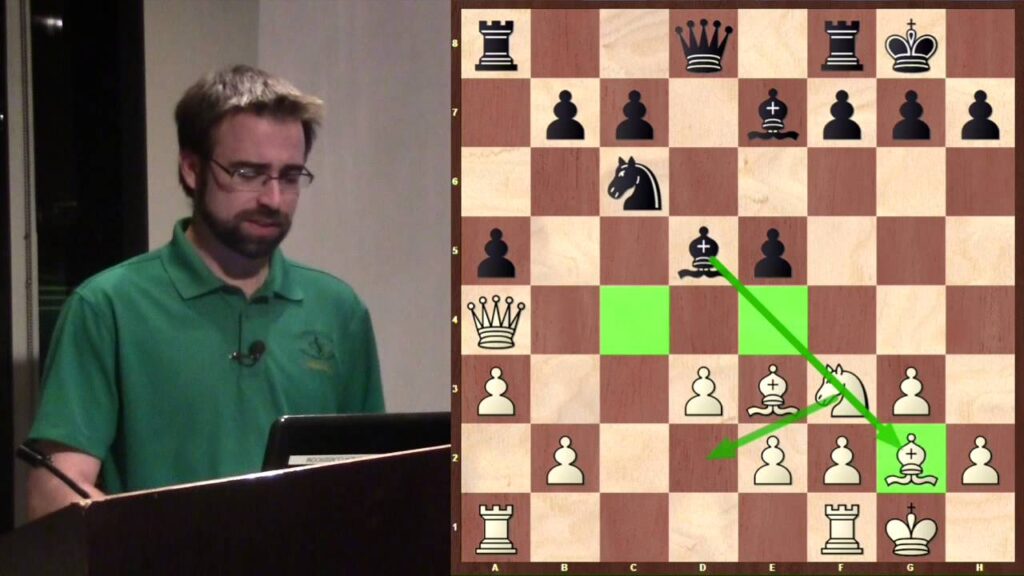
The English Opening is a chess debut characterized by white’s initial move – 1.c4. Named after English chess player Howard Staunton who popularized it in the mid-19th century, earlier masters also utilized it.
The English Opening is a flexible and versatile choice for white, allowing for the creation of diverse pawn structures and the ability to transpose into other debuts. It often leads to more positional and strategic play. White’s typical strategy in the English Opening revolves around central control and piece development.
The debut can evolve into different variations depending on black’s responses. For instance, after 1.c4 e5, the game could shift into a Reverse Sicilian Defense if white chooses to play 2.Nc3. Alternatively, if black responds with 1…c5, it might lead to a symmetrical position akin to a Reverse-Closed Sicilian Defense.
The English Opening is renowned for its flexibility and adaptability, making it a favored choice among players who wish to steer clear of deeply analyzed lines and direct the game to positions where they are more comfortable or can outmaneuver their opponents. It is part of the repertoire of many top-level grandmasters and is played by competitors across all echelons of chess.
The King’s Gambit
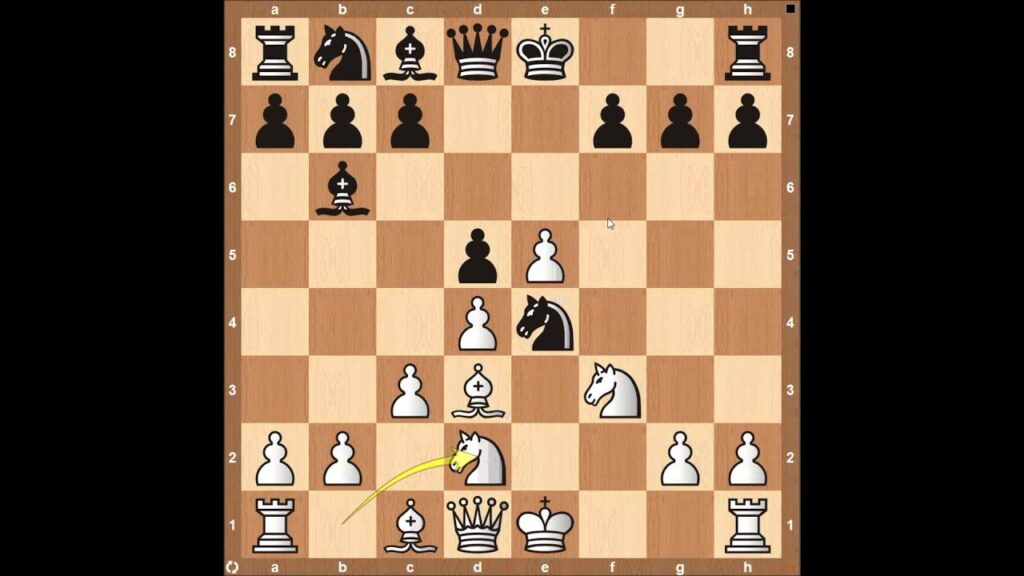
The King’s Gambit is a classic chess debut beginning with the moves:
- e4 e5;
- f4.
In the King’s Gambit, white offers the f4 pawn as a gambit to accelerate piece development and foster an aggressive, open position. The primary aim of this debut is to dominate the center and initiate an onslaught against the black king. The King’s Gambit has a storied past and enjoyed popularity among chess aficionados in the 19th century.
When black counters the King’s Gambit, they’re met with a crossroads: seize the pawn with 2…exf4, embracing the gambit, or opt for a different path with moves like 2…d6 or 2…Nf6. Accepting the gambit plunges both players into a complex, tactical skirmish ripe for aggressive play on both sides.
The King’s Gambit is cloaked in a romantic aura and remains a heart-pounding choice, although it’s less frequently seen in top-tier chess matches due to its bold nature for white. Nevertheless, it continues to be a favorite among enthusiasts and club-level competitors who relish the sharp and transparent positions it produces and are keen on navigating its tactical intricacies.
The Italian Game
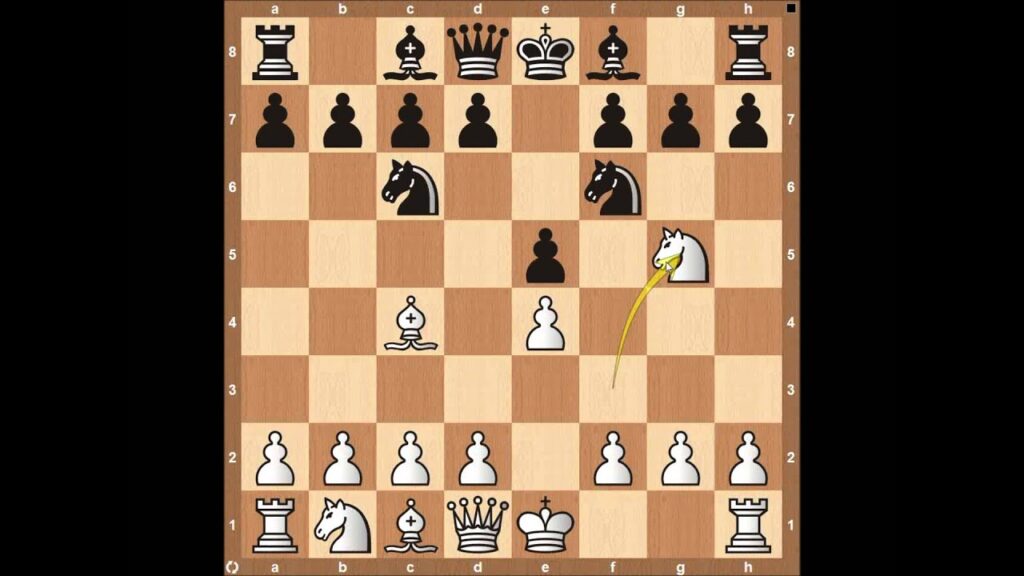
The Italian Game emerges as a classic chess opening after the following moves:
- e4 e5;
- Nf3 Nc6;
- Bc4.
White’s third move, 3. Bc4, brings the bishop into an assertive position, exerting pressure on the f7 square. This opening draws its name from the 16th-century Italian chess maestros who favored it.
The Italian Game is renowned for its open and fluid nature, enabling quick development and early aggression towards the f7 square, often leading to rich tactical play. A popular black response to challenge this setup is 3…Nf6, known as the Two Knights Defense.
At this juncture, white can steer the game towards various avenues, including the tactical and sharp Giuoco Piano with 4. d3 or the more stable and strategic Italian Gambit with 4. d4. This opening can give rise to a variety of pawn structures and strategies, offering a vast and multifaceted battlefield for both contenders.
The Italian Gambit is a time-honored and solid choice, often resulting in lively and dynamic positions suitable for players across the skill spectrum, and has been a choice of many grandmasters throughout chess history.
The Alapin Variation Opening
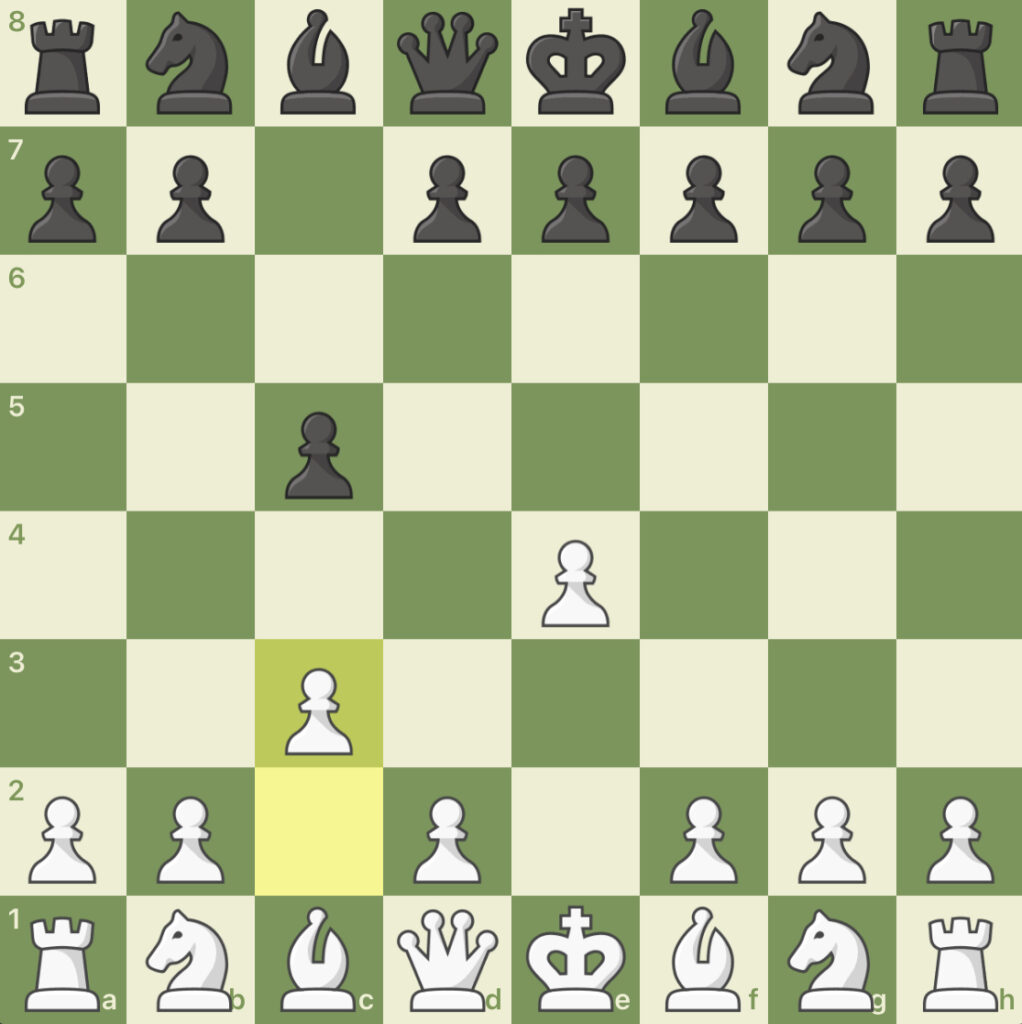
The Alapin Variation is a solid and pragmatic approach to the Sicilian Defense, beginning with 1. e4 c5. Named after Russian chess grandmaster Semyon Alapin, who championed and refined this line in the late 19th and early 20th centuries, it allows white to sidestep some of the more intricate and heavily analyzed lines of the Sicilian Defense while maintaining a flexible and sturdy stance.
The Alapin Variation typically unfolds with these moves:
- e4 c5;
- c3.
By moving 2…c3, white prepares to dominate the center with the forthcoming d4, while maintaining a robust pawn structure. Upon 2…d5, white frequently responds with 3.exd5, seizing central dominance and steering the game towards an open position.
This variation allows for a more measured and tranquil style of play compared to some of the Sicilian Defense’s other more aggressive lines. It can lead to an array of pawn formations and mid-game scenarios, making it a strategic selection for those who favor a game with less emphasis on immediate tactical scuffles and more on long-term planning.
Notably, the Alapin Variation stands as a flexible and dependable option for white, played at all levels from club games to high-stakes grandmaster confrontations. It’s the go-to for players looking to forgo the exhaustive analysis required by some of the other Sicilian variants, while still keeping the odds of gaining the upper hand well within reach.
Conclusion
A strong opening can indeed set the stage for the rest of the chess match. White’s strategic opening moves can carve out a favorable position, open avenues for an offensive, and catch the opponent off guard.
By mastering these top openings, you’ll deepen your understanding of the game and be better positioned to take control from the get-go. So don’t delay – bring out your chessboard and put your newfound insights to the test. Your journey toward chess proficiency is just beginning.